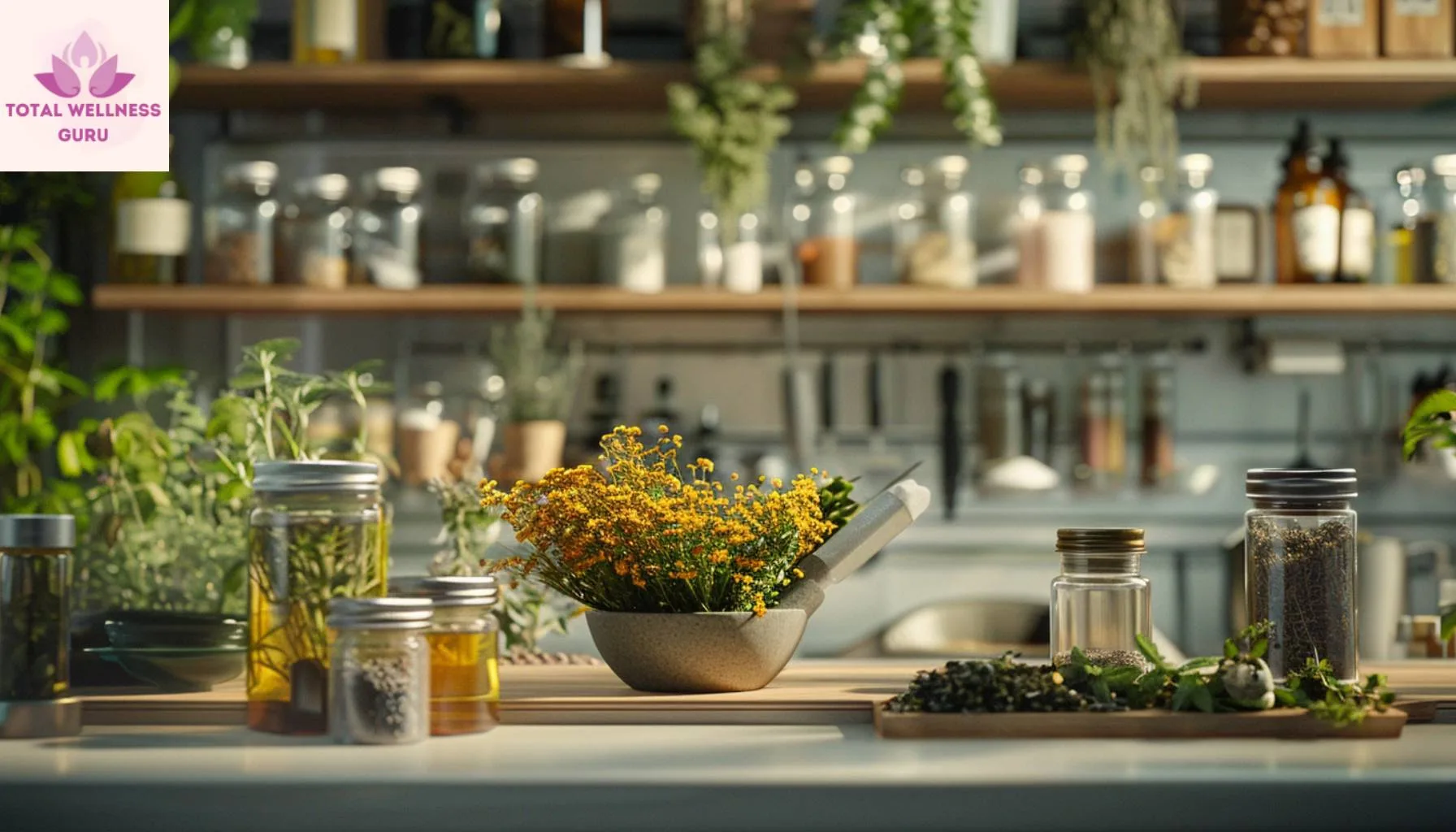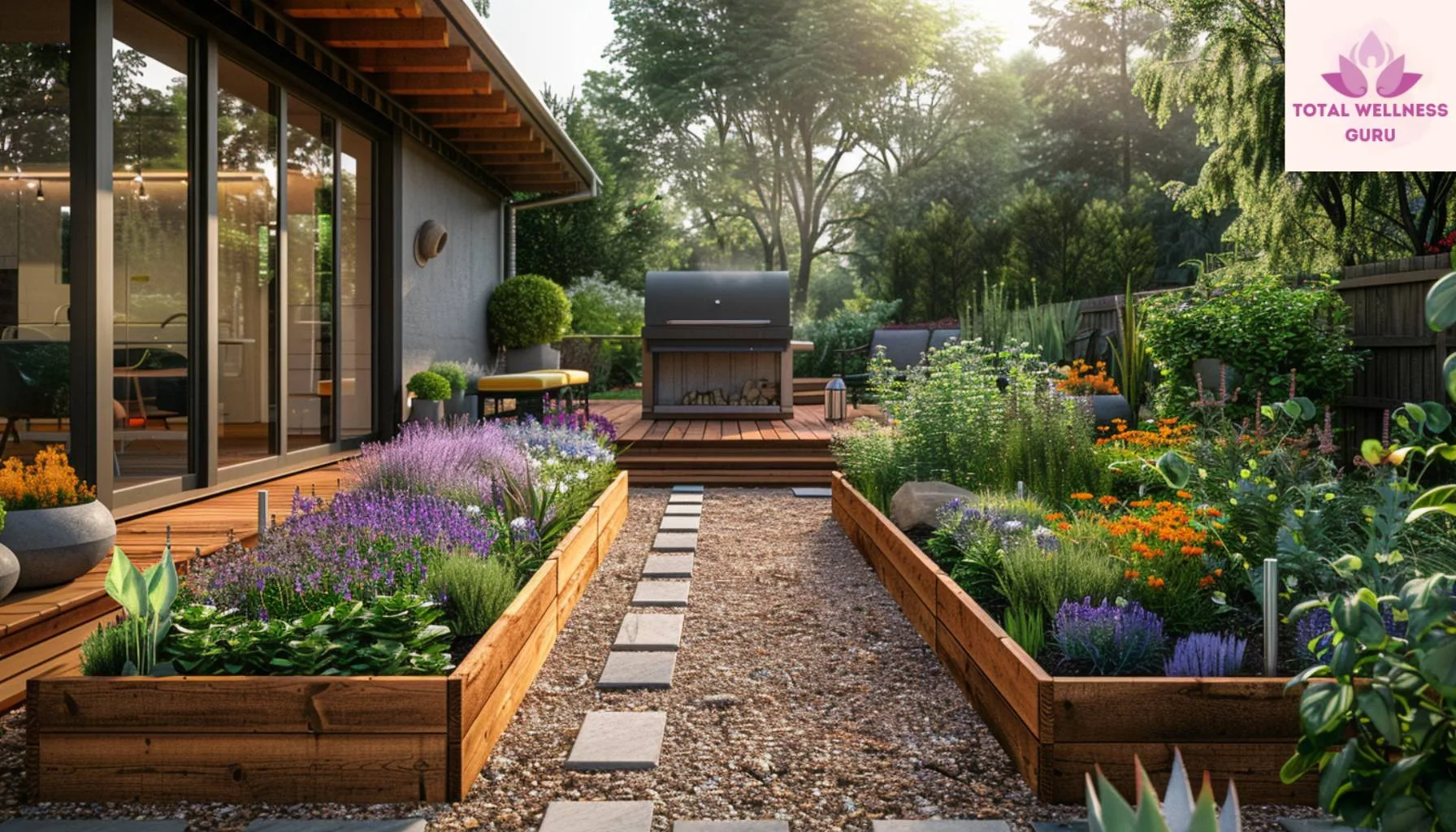 Lush backyard natural healing center garden filled with vibrant medicinal herbs like lavender, chamomile in bloom
Lush backyard natural healing center garden filled with vibrant medicinal herbs like lavender, chamomile in bloom
Contents of this Blog
ToggleTransform Your Garden into a Natural Healing Center with Medicinal Herbs
For many of us, gardening is a beloved hobby that allows us to get our hands dirty, reconnect with nature, and create beautiful outdoor spaces. But what if your garden could be so much more than just ornamental? Imagine transforming that humble patch of soil into a verdant natural healing center, brimming with medicinal herbs and plants that have been used for centuries to treat ailments and promote overall wellness.
That’s the power of a medicinal herb garden – a vibrant oasis where you can quite literally cultivate your own remedies and harness the incredible healing properties that nature provides. From soothing lavender to immune-boosting echinacea, each plant becomes a vital component of your personal apothecary garden.
And the benefits extend far beyond just having fresh, organic “medicines herbs ” at your fingertips. Tending to a medicinal garden instills a sense of self-reliance, allowing you to take charge of your family’s health and well-being. It’s a cost-effective way to nurture your green thumb while forging a deeper connection with the natural world around you.
So, whether you’re an experienced green thumb or a gardening novice, transforming your garden into a natural healing center is an immensely rewarding journey. In this guide, we’ll explore the steps to cultivate your very own medicinal herb paradise, from selecting the ideal plants to harvesting and utilizing your bounty. Get ready to unlock the ancient wisdom of nature’s pharmacy, one fragrant leaf and vibrant bloom at a time.
Choosing the Right Medicinal Herbs
The foundation of a truly transformative medicinal herb garden lies in carefully hand-picking herbs that can tend to a wide array of health needs. From relieving pain and enhancing immunity to herbs promoting restful sleep and aiding digestion, each plant you decide to grow should serve a vital purpose in your natural healing center.
 someone’s hands gently holding and examining different medicinal herb plants like yarrow
someone’s hands gently holding and examining different medicinal herb plants like yarrow
As you plan your garden’s blueprint, consider the climate conditions and space you have available. But also reflect on the specific remedies you’d like close at hand, whether for seasonal ailments or chronic issues. This will help curate the right herbal ensemble for your backyard apothecary.
Here are some time-honored medicinal herbs that deserve a spot in your backyard natural healing center:
1. Chicory – Don’t let this unassuming plant fool you. Its roots contain a powerful compound called chicoric acid that serves as a natural analgesic, relieving aches and inflammation without risk of addiction.
2. Yarrow – A trusty wound healer, yarrow has been used for centuries to stop bleeding and stave off infections. Its leaves also make an effective insect repellent when crushed.
3. California Poppy – Seek the restorative slumber of childhood with these vibrant poppies. Their compounds promote deep, uninterrupted sleep, providing natural cure for insomnia.
4. Marshmallow – More than just a campfire treat, the marshmallow plant soothes the entire digestive tract with its protective mucilage coating. It’s particularly helpful for ulcers and gut disorders.
5. Chamomile – Just like grandma used to prescribe, chamomile is a true “heal-all” with anti-inflammatory and antimicrobial properties that can tend to everything from stomach aches to skin irritations.
6. Lavender – This aromatic purple beauty has been cherished for centuries for its ability to calm the mind, ease anxiety, and promote healthy sleep cycles. Its oil is also a skincare multi-tasker.
7. Echinacea – When you need an immunity boost, look no further than the radiant coneflowers of echinacea. This powerful herb is nature’s defense against infections and general illness.
Check out more such medicinal herbs here
As your medicinal garden takes shape, implement the age-old technique of companion planting to nurture a symbiotic relationship between herbs and maximize their growth and vitality. Some herbs also make excellent companions to vegetable crops.
With an apothecary garden tailored to your unique needs, you’ll awaken the curative spirit of your backyard while enjoying the beauty and fragrance it provides.
Planning and Designing Your Medicinal Garden
With your dream lineup of medicinal herbs in mind, it’s time to plan and design your natural healing center that will make them thrive. Proper planning from the start ensures your backyard not only looks beautiful but also functions optimally as an apothecary garden.
 Hand-drawn garden layout with labeled sections for different herb varieties, raised beds, pathways
Hand-drawn garden layout with labeled sections for different herb varieties, raised beds, pathways
A) Site Selection
The first key decision is which part of your backyard or garden you want to dedicate to this private medicinal herb center. Observe which areas receive at least 6-8 hours of direct sunlight daily, as most herbs crave bright conditions. Proximity to a water source for irrigation is also ideal. Evaluate the soil quality and drainage – herbs prefer well-draining, nutrient-rich ground.
B) Garden Layout
Dedicated raised beds are a popular choice for landscaping a medicinal herb garden, allowing you to tailor the soil mixture and maintain a tidy aesthetic. But medicinal herbs can also be integrated artfully alongside ornamental plants or veggie patches.
When mapping out your layout, factor in spacing and airflow between plants. Overcrowding can lead to mold and disease. Consider height variation, placing taller specimens towards the back. Clearly sectioning off herbs by type also helps with maintenance.
C) Design Touch
While serving a very practical purpose, there’s no reason your backyard natural healing center can’t be an inviting, sensory delight. Integrate elements like tidy gravel or stone pathways to easily access all quarters. Decorative trellises or obelisks provide vertical growing spaces. Benches offer spots for quiet moments among the greenery.
Tap books and online galleries to gain inspiration as you plan the aesthetic and functional design. You may even model it after traditional medicinal herb gardens found in monasteries or hedgerows. Let your inner landscape artist shine!
Before breaking ground, have a solid blueprint factoring in bloom times, growth rates, spacing needs, and upkeep routines. This attention to planning will pay off once your apothecary garden is abloom with powerful healing plants.
Planting and Caring for Your Medicinal Herbs
With your medicinal garden design in place, it’s time to get those healing herbs in the ground and nurture them to reach their lush, bountiful potential. Proper planting techniques and consistent care are key to cultivating the apothecary garden of your dreams.
 A lady bent down planting seeds of medicinal herb plants
A lady bent down planting seeds of medicinal herb plants
I) Soil Preparation
Before sowing the first seed or putting transplants in the ground, enrich your garden’s soil with the right amendments. Most herbs thrive in well-draining loamy soil that’s slightly acidic. Work in compost, manure, or specialty herb planting mixes to improve fertility and texture. A soil test can identify any other amendments needed.
II) Planting
Refer to your layout plan when situating herbs in their designated areas. Follow specific planting depth and spacing guidelines for each variety. This provides room for root development and good airflow as they mature.
Some herbs like lavender and rosemary grow better from nursery transplants versus seeds. Others, including chamomile and calendula, can be directly sown once soil temperatures warm up. Have your tools like markers, labels, and weed mats at the ready.
III) Maintenance
Keeping up with basic garden maintenance like watering, weeding, and pruning will be vital. Adjust your irrigation schedule as plants establish their root systems. Use mulch to control weeds and retain soil moisture.
Routinely deadhead spent blooms to encourage further flower production. Prune excess growth to admit light and improve air circulation, which helps prevent fungal diseases. Implement organic pest control methods like introducing beneficial insects or applying neem oil.
Throughout the season, closely observe your herbs’ growth patterns and needs. Maintain a garden journal to help plan for next year. With some tender loving care, your medicinal crops will reward you with an abundant harvest.
Utilizing Your Natural healing Center’s harvest
With your backyard transformed into a lush medicinal herb paradise, it’s time to enjoy the literal fruits of your labor. Harvesting your fresh botanicals is just the first step – learning how to properly prepare and utilize them as natural remedies is where you’ll unlock their true healing potential.
 Rustic home kitchen with different medicinal herb preparations like drying herbs, jars of tinctures
Rustic home kitchen with different medicinal herb preparations like drying herbs, jars of tinctures
i) Preparation Methods
There are many traditional ways to prepare medicinal herbs depending on their intended use. Crafting a simple herbal tea is perhaps the most straightforward, involving steeping fresh or dried herb parts. Tinctures utilize alcohol or glycerin to extract concentrated plant compounds. Salves and ointments infuse oils with herbs for topical application on skin ailments.
For acute needs like wound care, making a fresh herb poultice by mashing leaves into a paste can provide quick relief. Decoctions involve simmering hardy herbs like roots and bark to release maximum medicinal properties. Essential oil distillation captures the aromatic, therapeutic essence.
For more ways to utilize your medicinal herbs, watch this video
ii) Simple DIY Recipes
Start experimenting with basic medicinal herb recipes suited for common household needs. A calming chamomile tea works wonders for relieving stress and promoting sleep. Echinacea tincture boosts immunity when cold and flu season hits. Whip up a gardener’s hand salve with calendula for irritated, dry skin.
Don’t be afraid to get creative in the kitchen too! Many culinary herbs like oregano, thyme, and rosemary pack antibacterial and antioxidant power. Incorporate them into meals for an extra dose of health-promoting benefits.
iii) Safety Considerations
While medicinal plants offer natural healing, it’s still wise to exercise caution. Properly identify and source herbs from trusted suppliers. Introduce new remedies gradually, consulting medical experts about potential drug interactions or side effects. And pass on the ancient herbal wisdom to younger family members.
With a little practice and sound guidance, the medicinal herbs from your vibrant backyard can become versatile ingredients for homemade remedies and preventative care.
The Therapeutic Benefits of Gardening
As you immerse yourself in cultivating your natural healing center, you’ll quickly discover that the journey provides much more than just the physical harvests. The very act of tending to a garden can impart tremendous therapeutic benefits for the mind, body, and soul.
 Woman sitting in the backyard medicinal garden with a look of calmness on her face
Woman sitting in the backyard medicinal garden with a look of calmness on her face
On a physical level, gardening serves as a low-impact workout that exercises major muscle groups through activities like digging, pulling weeds, and carrying soil or materials. Working in the garden exposes you to healthy doses of vitamin D from sunlight while connecting you to invigorating fresh air.
But perhaps more importantly, gardening allows you to press pause on the stresses of daily life and simply be present in nature. The sights, smells, and sounds of your lush greenery can induce a calming sensation that soothes the mind and spirit. Watching your medicinal herbs flourish instills a grounding sense of purpose.
This medicinal garden besides being a natural healing center for the family, also creates opportunities for bonding and teaching younger generations about self-reliance and respecting the natural world. Children can develop a sense of responsibility by caring for plants. The accomplishment of growing your own remedies nurtures confidence.
Beyond the obvious benefits of having easy access to natural medicines, immersing yourself in the nurturing realm of gardening provides a holistic path to well-being. Each bud and blossom will remind you of nature’s resilient capacity for healing.
By now, you can surely envision the transformative potential of cultivating your very own medicinal herb garden – a verdant backyard oasis that serves as a natural healing center. From relieving ailments and boosting immunity to nurturing mind-body wellness, each fragrant leaf and vibrant bloom holds centuries of botanical wisdom.
As you embark on this rewarding journey, don’t be intimidated if you’re new to gardening. Start small with just a few key herbs that pique your interest, and have patience as you learn their needs. Over time, you can expand your apothecary garden.
 Thriving medicinal herb natural healing center garden in full bloom in backyard
Thriving medicinal herb natural healing center garden in full bloom in backyard
More than just providing easy access to organic remedies, nurturing a medicinal garden connects you to nature’s rhythms in a deeply grounding way. It instills self-reliance while offering a therapeutic creative outlet. Every carefully tended plant is a step towards reclaiming your well-being.
So go ahead, get those hands dirty, and awaken the curative spirit right in your backyard haven. The path to cultivating radiant health through nature’s gifts is calling. All you need to do is follow the trail of seeds.
Ready to transform your garden into a thriving natural healing center?
Explore our premium Medicinal Herb Garden Kit, featuring 10 powerful plants handpicked to cultivate your very own backyard apothecary.
